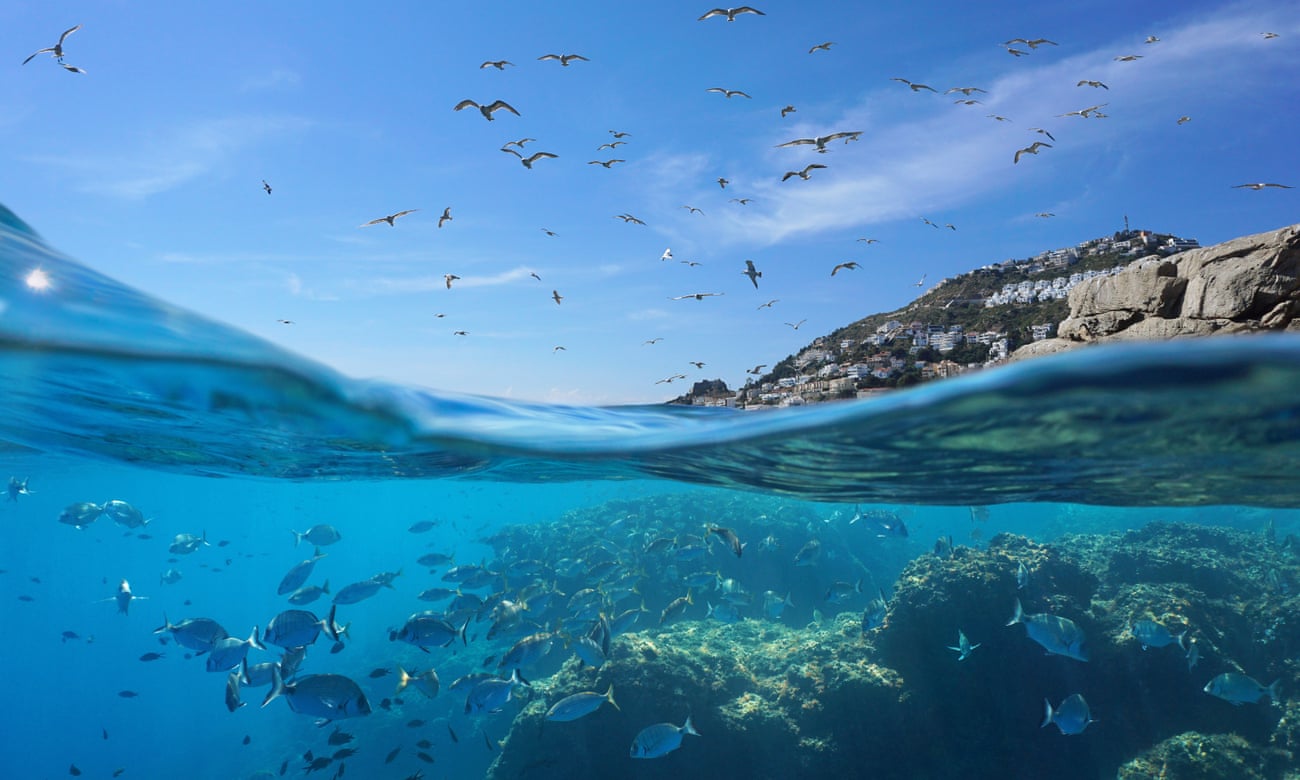
As ocean fishing increases, mid-depth species are increasingly being harvested.
Photograph: Damocean/Getty Images/iStockPhoto
Global experts consider the impact of emerging trends on marine and coastal biodiversity
Mary Hoff for Ensia
Tue 6 Sep 2022 07.00 BST
In the spirit of the annual University of Cambridge–led horizon scan of emerging conservation issues, 30 experts from around the world last year put their heads together to brainstorm and assess the potential impacts to ocean and coastal ecosystems over the next decade of a spectrum of human activities.
Their analysis, published in July in Nature Ecology and Evolution, focuses on 15 big issues.
Fire fallout
Global experts consider the impact of emerging trends on marine and coastal biodiversity
Mary Hoff for Ensia
Tue 6 Sep 2022 07.00 BST
In the spirit of the annual University of Cambridge–led horizon scan of emerging conservation issues, 30 experts from around the world last year put their heads together to brainstorm and assess the potential impacts to ocean and coastal ecosystems over the next decade of a spectrum of human activities.
Their analysis, published in July in Nature Ecology and Evolution, focuses on 15 big issues.
Fire fallout

A helicopter releases water on to a wildfire in Rethimno,
Greece, that was rekindled by strong winds.
Photograph: Nikos Chalkiadakis/EPA
The increased frequency and severity of fires on land can have cascading impacts as wind and rain carry soot, nutrients, metals and other byproducts of burns to coasts and oceans.
In some cases these substances can boost the productivity of ocean plants. But the disruptions they cause can also shift the balance of life, making it difficult for some species such as corals to survive.
Dark matter

The increased frequency and severity of fires on land can have cascading impacts as wind and rain carry soot, nutrients, metals and other byproducts of burns to coasts and oceans.
In some cases these substances can boost the productivity of ocean plants. But the disruptions they cause can also shift the balance of life, making it difficult for some species such as corals to survive.
Dark matter

Exposed arctic permafrost at the edge of tundra cliffside
as it erodes into Kotzebue Sound, Alaska.
Photograph: Peace Portal Photo/Alamy
More severe storms caused by climate change, along with development, dredging, thawing permafrost and other factors, are increasing the amount of sediment and nutrients in ocean waters and increasing algae growth. This can reduce the ability of sunlight to penetrate into deep waters and alter water chemistry.
The changes can have some benefits, such as reducing coral bleaching. But they also alter species mix and potentially reduce the ability of organisms to soak up carbon.
Acidification meets metals
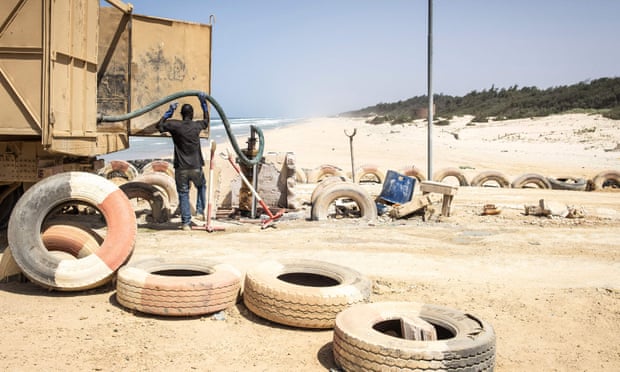
More severe storms caused by climate change, along with development, dredging, thawing permafrost and other factors, are increasing the amount of sediment and nutrients in ocean waters and increasing algae growth. This can reduce the ability of sunlight to penetrate into deep waters and alter water chemistry.
The changes can have some benefits, such as reducing coral bleaching. But they also alter species mix and potentially reduce the ability of organisms to soak up carbon.
Acidification meets metals

A man pumps acid waste into the sea along a stretch of beach
near the village of Mboro Kandio in Senegal.
Photograph: John Wessels/AFP/Getty Images
Toxic metals enter the ocean from industrial waste and disturbance of previously polluted sediments by storms and human activities. As carbon dioxide concentrations increase in the atmosphere, the ocean absorbs more of the gas and its water acidifies. The acidity in turn can increase the ability of marine organisms to take up the metals.
In some places where metals are a limiting factor, such as the deep ocean, this can increase phytoplankton growth. In other places, the metals can be toxic to ocean organisms and contaminate bivalves we harvest and eat, potentially causing human health problems as well.
Pole shift
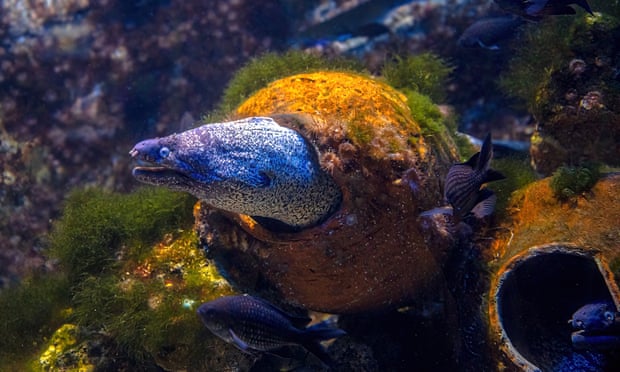
Fatty acid famine
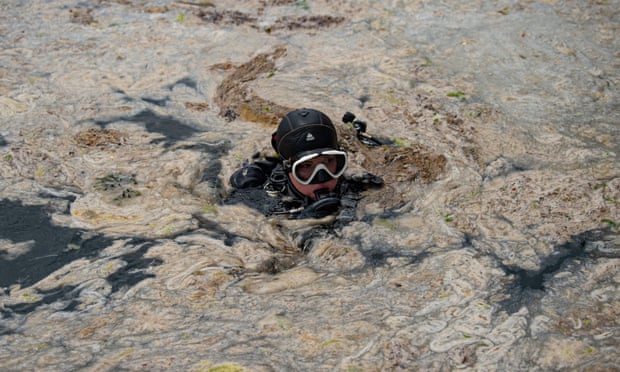
Toxic metals enter the ocean from industrial waste and disturbance of previously polluted sediments by storms and human activities. As carbon dioxide concentrations increase in the atmosphere, the ocean absorbs more of the gas and its water acidifies. The acidity in turn can increase the ability of marine organisms to take up the metals.
In some places where metals are a limiting factor, such as the deep ocean, this can increase phytoplankton growth. In other places, the metals can be toxic to ocean organisms and contaminate bivalves we harvest and eat, potentially causing human health problems as well.
Pole shift

A brown moray eel. The species lives in the eastern Atlantic Ocean
and Mediterranean.
Photograph: BennyMarty/Getty Images/iStockPhoto
Warming ocean waters are causing ocean organisms to move poleward in search of cooler conditions, with shifts happening five times as fast as those occurring on land.
In some cases, other species that better tolerate the heat can move in to fill the void. But in some places at the equator, ocean biodiversity is actually decreasing, with fewer plants and animals around to keep the ecosystem healthy, resilient and able to meet human needs for food.
Warming ocean waters are causing ocean organisms to move poleward in search of cooler conditions, with shifts happening five times as fast as those occurring on land.
In some cases, other species that better tolerate the heat can move in to fill the void. But in some places at the equator, ocean biodiversity is actually decreasing, with fewer plants and animals around to keep the ecosystem healthy, resilient and able to meet human needs for food.
Fatty acid famine

A diver swims along the Caddebostan shore of the Marmara Sea
to inspect mucilage caused by the excessive proliferation of phytoplankton.
Photograph: Yasin Akgül/AFP/Getty Images
Fish – particularly slow-growing species that inhabit cold water – are a big source of essential fatty acids (EFAs), an important component of the human diet. The fish in turn obtain EFAs from phytoplankton.
As climate changes cause ocean waters to warm, phytoplankton are likely to make fewer EFAs and fish ranges could shift in ways that reduce their ability to ingest these compounds. This might have adverse impacts not only for human diets but for other ocean lifeforms that depend on phytoplankton and phytoplankton-eating fish for sustenance.
Protein potential
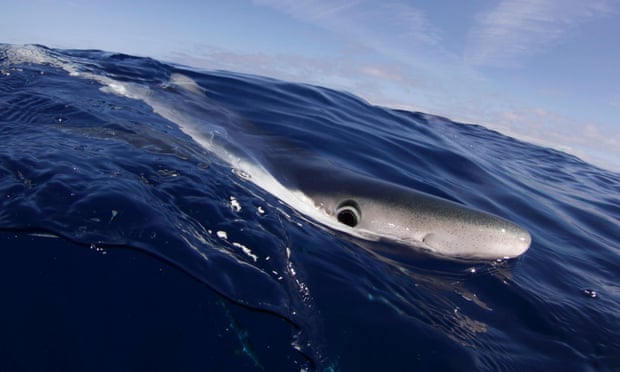
Fish – particularly slow-growing species that inhabit cold water – are a big source of essential fatty acids (EFAs), an important component of the human diet. The fish in turn obtain EFAs from phytoplankton.
As climate changes cause ocean waters to warm, phytoplankton are likely to make fewer EFAs and fish ranges could shift in ways that reduce their ability to ingest these compounds. This might have adverse impacts not only for human diets but for other ocean lifeforms that depend on phytoplankton and phytoplankton-eating fish for sustenance.
Protein potential

A blue shark in Santa Maria, Azores. Sharks are rich in collagen.
Photograph: Nuno Sa/NPL/Alamy
A protein called collagen is used to make cosmetics and other consumer goods. It is currently harvested mainly from livestock but as demand grows, manufacturers may turn to collagen-rich ocean animals such as sponges, jellyfish and sharks.
On a positive note, the trend could boost sponge farming, reduce the impact of undesirable jellyfish and provide a use for parts of harvested fish that otherwise would be thrown away. But, concerns revolve around reduced incentives to avoid catching non-target species in commercial ocean fishing.
Swim bladder demand

A protein called collagen is used to make cosmetics and other consumer goods. It is currently harvested mainly from livestock but as demand grows, manufacturers may turn to collagen-rich ocean animals such as sponges, jellyfish and sharks.
On a positive note, the trend could boost sponge farming, reduce the impact of undesirable jellyfish and provide a use for parts of harvested fish that otherwise would be thrown away. But, concerns revolve around reduced incentives to avoid catching non-target species in commercial ocean fishing.
Swim bladder demand

The harvest of fish could have an impact on non-target species such as turtles.
Photograph: Steve Parsons/PA
The market for dried swim bladders, a luxury item in some cultures, is growing. Harvest of fish aimed at meeting the demand already has contributed to the endangerment of at least three species.
As populations decline, pressure could shift to related species, creating a “cascading effect” that puts those species at risk as well. And increased demand not only threatens the target species but also non-target sharks, turtles and other marine organisms that are accidentally caught along with them.
Carbon mover removal
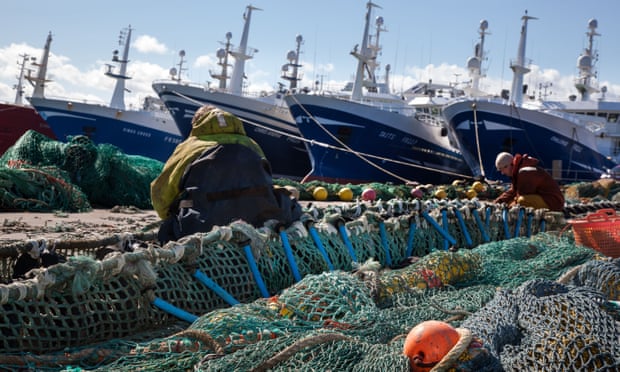
The market for dried swim bladders, a luxury item in some cultures, is growing. Harvest of fish aimed at meeting the demand already has contributed to the endangerment of at least three species.
As populations decline, pressure could shift to related species, creating a “cascading effect” that puts those species at risk as well. And increased demand not only threatens the target species but also non-target sharks, turtles and other marine organisms that are accidentally caught along with them.
Carbon mover removal

Pelagic ships at Fraserburgh harbour, Scotland.
Photograph: Media World Images/Alamy
As fishing pressure on the ocean increases, mid-depth species are increasingly being harvested. The problem is these are also the species that help move carbon in the organisms they eat into the deep sea where it can be sequestered for long times. Removing these fish could disrupt the downward movement of carbon, reducing the ocean’s ability to counteract climate change.
Lithium water
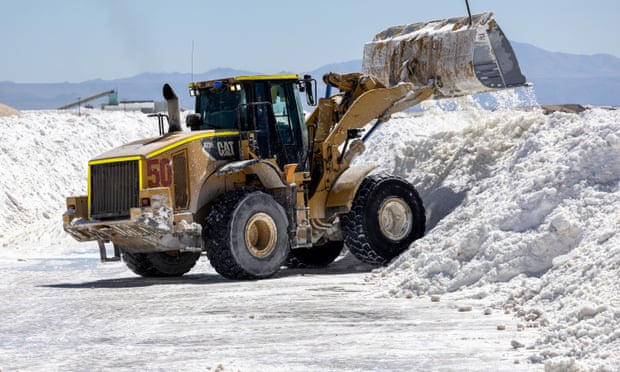
As fishing pressure on the ocean increases, mid-depth species are increasingly being harvested. The problem is these are also the species that help move carbon in the organisms they eat into the deep sea where it can be sequestered for long times. Removing these fish could disrupt the downward movement of carbon, reducing the ocean’s ability to counteract climate change.
Lithium water

A worker moves salt byproduct at a lithium mine in the
Atacama desert in South America.
Photograph: John Moore/Getty Images
A boom in demand for lithium for batteries, such as those used in electric vehicles, has mining interests turning to deep ocean waters that contain significant quantities of the valuable metal. With emerging lithium-concentrating technologies, extraction is a looming reality – potentially threatening species living in rare and extreme environments.
More the merrier?
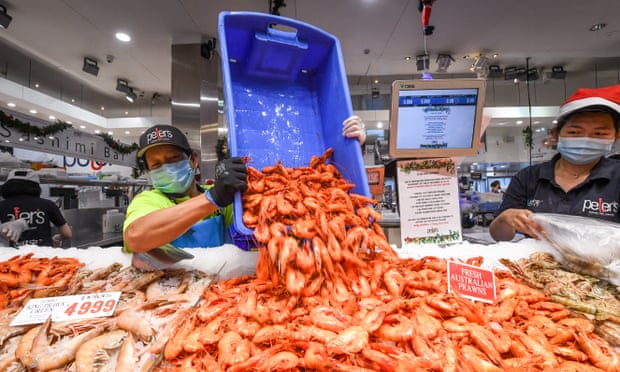
A boom in demand for lithium for batteries, such as those used in electric vehicles, has mining interests turning to deep ocean waters that contain significant quantities of the valuable metal. With emerging lithium-concentrating technologies, extraction is a looming reality – potentially threatening species living in rare and extreme environments.
More the merrier?

Vendors at Sydney fish market, Australia.
Photograph: James D Morgan/Getty Images for Sydney Fish Market
As humans increasingly turn to the oceans for food, energy and more, opportunity arises to cluster enterprises. This can create economies of scale and reduce habitat disruption.
The researchers note that we need ways to evaluate the relative costs and benefits of colocation to minimise habitat disruption and threats to biodiversity, and to avoid sub-optimisation, such as expecting the ocean area beneath a floating wind turbine to be an ideal aquaculture site.
Cities at sea

As humans increasingly turn to the oceans for food, energy and more, opportunity arises to cluster enterprises. This can create economies of scale and reduce habitat disruption.
The researchers note that we need ways to evaluate the relative costs and benefits of colocation to minimise habitat disruption and threats to biodiversity, and to avoid sub-optimisation, such as expecting the ocean area beneath a floating wind turbine to be an ideal aquaculture site.
Cities at sea

Hydroponic plant-growing in Indonesia. Floating cities could
aid this practice while boosting marine life such as anemones.
Photograph: Robertus Pudyanto/Getty Images
Talk of building towns in the ocean has increased in recent years. Benefits to humanity would be new energy sources, abundant water for hydroponic agriculture and more, but governance challenges would be likely.
It is a mixed bag for ocean life, too: floating cities could help anemones, sea urchins and other marine organisms that live at least part of their life cycle on rocky intertidal surfaces migrate to safer places in the face of climate change. But they also could facilitate the spread of biodiversity-threatening invasive species.
‘Green’ pollutants

Talk of building towns in the ocean has increased in recent years. Benefits to humanity would be new energy sources, abundant water for hydroponic agriculture and more, but governance challenges would be likely.
It is a mixed bag for ocean life, too: floating cities could help anemones, sea urchins and other marine organisms that live at least part of their life cycle on rocky intertidal surfaces migrate to safer places in the face of climate change. But they also could facilitate the spread of biodiversity-threatening invasive species.
‘Green’ pollutants

Cobalt mining in the Democratic Republic of the Congo.
Photograph: Sebastian Meyer/Corbis/Getty Images
Growth in electric vehicles and other “green” technologies that require batteries is increasing the use of cobalt, nickel and other trace elements. These elements pose a contamination risk to near-shore ocean sediments as they leach from production sites and landfills, with potential implications for sea life.
Tracking technologies
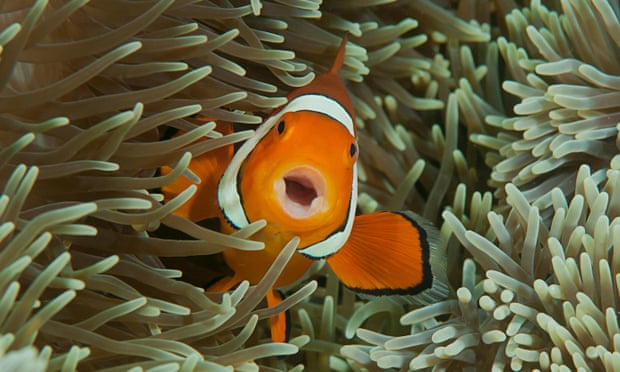
Growth in electric vehicles and other “green” technologies that require batteries is increasing the use of cobalt, nickel and other trace elements. These elements pose a contamination risk to near-shore ocean sediments as they leach from production sites and landfills, with potential implications for sea life.
Tracking technologies

A singing ocellaris clownfish shelters among the venomous tentacles of sea anemone. Photograph: Hans Gert Broeder/Alamy
It is hard to track the movements of marine organisms because radio signals transmit poorly through water. Now, new technology known as underwater backscatter localisation (UBL) has potential to dramatically expand our ability to study undersea life.
UBL could benefit conservation by enhancing the ability to understand distribution and behaviour of ocean animals. But it also will be important to consider how the presence of the devices might adversely affect them.
Robotic research
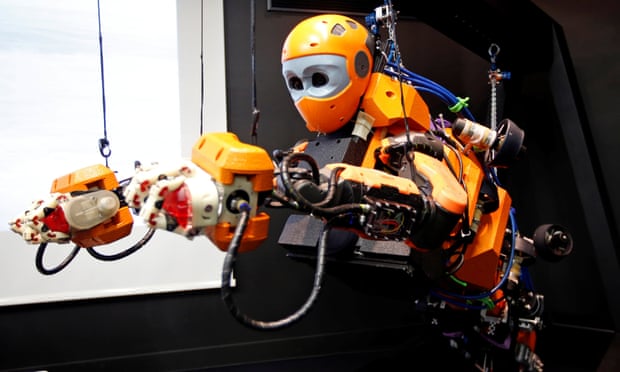
Biodegrading into what?
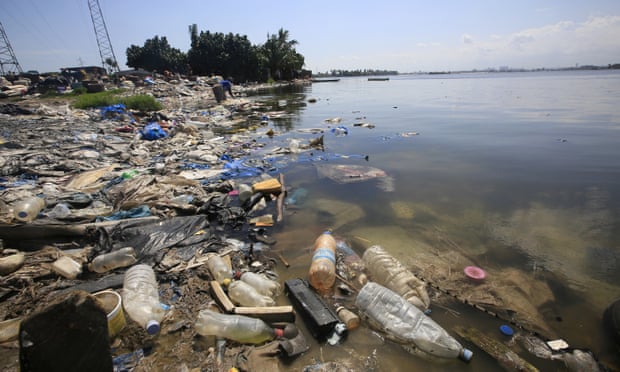
It is hard to track the movements of marine organisms because radio signals transmit poorly through water. Now, new technology known as underwater backscatter localisation (UBL) has potential to dramatically expand our ability to study undersea life.
UBL could benefit conservation by enhancing the ability to understand distribution and behaviour of ocean animals. But it also will be important to consider how the presence of the devices might adversely affect them.
Robotic research

The humanoid diving robot OceanOne during its presentation in Marseille, France.
Photograph: Jean-Paul Pélissier/Reuters
The use of robots that mimic life forms for ocean research is growing. Because so-called soft robots are not limited by the need for pressurisation like rigid robotics, this may boost deep sea exploration.
At the same time, it could disrupt previously unaffected environments and harm marine life by using novel organisms as fuel or being ingested by indiscriminating animals.
The use of robots that mimic life forms for ocean research is growing. Because so-called soft robots are not limited by the need for pressurisation like rigid robotics, this may boost deep sea exploration.
At the same time, it could disrupt previously unaffected environments and harm marine life by using novel organisms as fuel or being ingested by indiscriminating animals.
Biodegrading into what?

Plastic debris along the Ébrié lagoon in Abidjan, Ivory Coast.
Photograph: Legnan Koula/EPA
Biodegradable plastics are beneficial because they can prevent the buildup of rubbish in the ocean environment. But what about the components the materials degrade into?
The speed with which such materials are entering the market due to consumer demand has in some cases limited testing of the impacts of degradation of the products, opening the door to potential problems with toxicity within the marine environment.
This article was originally published on Ensia
Biodegradable plastics are beneficial because they can prevent the buildup of rubbish in the ocean environment. But what about the components the materials degrade into?
The speed with which such materials are entering the market due to consumer demand has in some cases limited testing of the impacts of degradation of the products, opening the door to potential problems with toxicity within the marine environment.
This article was originally published on Ensia
No comments:
Post a Comment